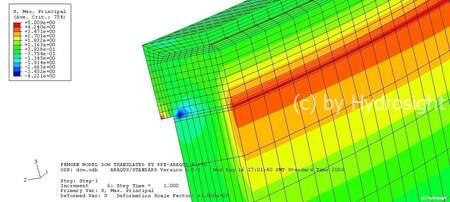Structural Acrylic
Acrylic is a very unusual material. It serves not only optical but also structural purposes. Its optical properties are well understood and are used in diverse optical applications.
Because of its transparency, it is also utilized in applications where it must resist static and dynamic forces, for example, as windows or shells of pressure vessels under external or internal pressure. In such applications the mechanical properties of acrylic rather than the optical properties become of paramount importance. Properly applied, the acrylic structural members not only provide visibility but can safely contain static or dynamic loading of almost any magnitude.
The key item in the design of structural acrylic components for the ability to carry loads in the form of pressure, is the selection of the maximum working stress level that will allow the component to function properly without precipitating the initiation of fracture.
The response of acrylic to applied loads is more complex than eg. for metals. The response of an acrylic structure to stresses is nonlinear, a function of both the temperature and duration of stress application (i.e., it exhibits viscoelasticity). Because of its temperature and time-dependent viscoelasticity, the designer has to consider in the selection of safe working stress both temperature and duration of loading, as they both affect not only the magnitude of strain but also the yield point of the material.
To date, only the design of acrylic panels in aquaria is well enough understood where their selection can be based alone on finite element analysis (FEA) and an empirically-selected working stress level. This has been feasible because, in this case, the engineer only has to consider in his design a benign environment, a steady loading condition, and an absence of restraint on the weight of the structure allowing him to use a single low-working stress level for acrylic aquaria of any configuration.
One feature of the acrylic material that must be considered by the engineer in the design of acrylic components the degradation of their mechanical properties with exposure to service environment. Exposure in general, and sunshine and organic solvents, in particular, will degrade acrylic's properties more rapidly.
To prevent catastrophic failure of the acrylic components in service, they must be periodically inspected and their condition noted. With proper care and inspection the acrylic components may exceed their design life without fracturing or removal from service. To date, the service life of acrylic windows and pressure hulls based on the working stress levels specified by ASMIE PVHO-1 Safety Standard and applied in this book to design of acrylic pressure-resistant components has exceeded their design life without failure. Under proper care, the acrylic components perform as reliably as the metallic vessel to which they are attached.

Stress analysis for window underwater.

Acrylic window in seating arrangement
